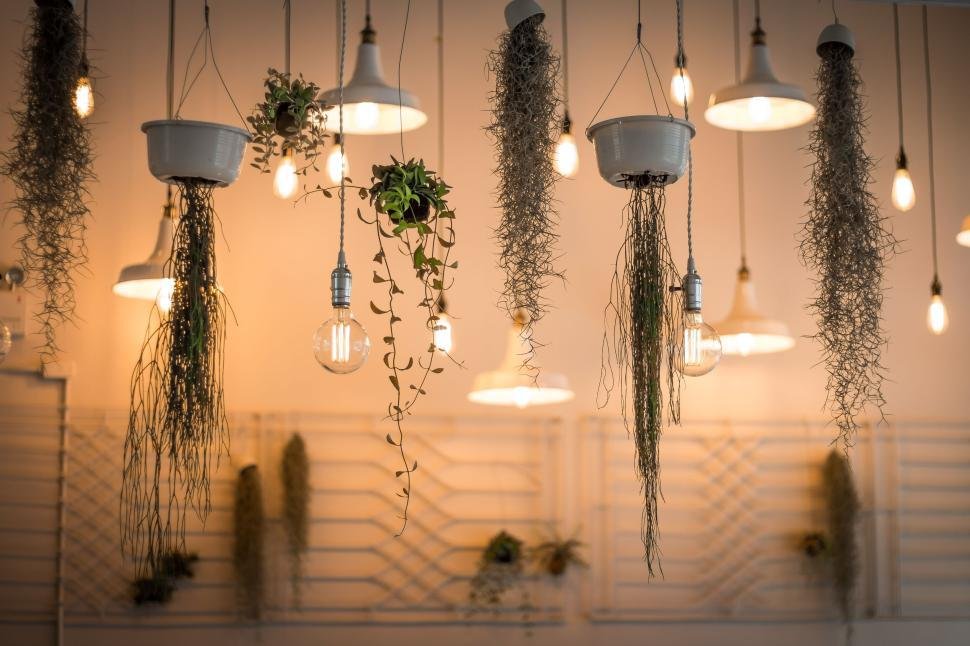Did you know that homes with well-balanced natural and artificial lighting can sell for up to 3% more than poorly lit properties? As a person of home decoration with over 15 years of experience, I’ve seen firsthand how the right balance of light can transform a living room from just okay to absolutely stunning!
Let me tell you something – when I first started working with home lighting, I made the rookie mistake of thinking more light was always better. Boy, was I wrong! After countless projects and some pretty enlightening mistakes (pun intended!), I’ve learned that the secret lies in the delicate dance between natural and artificial light sources.
In this guide, I’ll share everything I’ve discovered about creating that perfect balance in your living room. Trust me, once you understand these principles, you’ll never look at your living room lighting the same way again. Let’s dive into transforming your space into a perfectly lit haven!
Understanding Natural Light Patterns in Your Living Room

You know what’s funny? Most people think they know how sunlight moves through their living room, but when I ask them to map it out, they’re often surprised by what they discover! I remember working with a client who insisted their room got “tons of natural light” only to realize they were getting just two hours of direct sunlight daily.
Here’s what I’ve learned about tracking natural light patterns: Start by taking photos of your living room every two hours from sunrise to sunset. I know it sounds like overkill, but trust me – this simple exercise will revolutionize your understanding of your space! I actually did this in my own home and discovered a dark corner I’d never noticed before.
The intensity of natural light isn’t constant – it changes dramatically throughout the day. I use a light meter app on my phone (there are plenty of free ones available) to measure the actual brightness levels. This has been a game-changer for many of my clients because they are struggling with their previous lighting experience! You’d be amazed at how much light levels can vary even within a few feet.
One crucial thing I’ve noticed over the years is how seasonal changes affect natural light. During summer, you might get plenty of light until 8 PM, but come winter, you could be in darkness by 4 PM. This is why I always recommend creating a lighting plan that accounts for these seasonal variations.
I once worked on a project where we had to completely revise our lighting plan because we hadn’t accounted for the afternoon sun reflecting off a neighbor’s new windows! These real-world factors can significantly impact your room’s natural light patterns.
Strategic Window Treatment Solutions
Let me tell you about the time I made a huge window treatment mistake in my own living room! I installed beautiful blackout curtains without any sheers, thinking I’d just open them fully during the day. What I didn’t realize was how much I’d need to adjust them throughout the day to control glare and heat. Learn from my mistakes, folks!
The secret to perfect window treatments is layering – it’s like having a volume control for natural light. I always recommend starting with a good set of sheers. They’re like the diffuser on a photography light – they soften harsh sunlight and create this beautiful, even glow throughout the room. For my clients with south-facing windows, I suggest light-filtering sheers with a 3% openness factor – it’s technical, but trust me, it makes a difference!
Smart motorized blinds have literally changed my life – and my clients’ lives too! While they’re a bit of an investment upfront (ranging from $200-$800 per window), they’re worth every penny. I programmed mine to automatically adjust based on the sun’s position, and it’s amazing how much more comfortable my living room stays throughout the day.
use window curtain for good look. It not only help for decoration but also decrease over sunshine. so if you can you should add some curtain for your living room.
Here’s a pro tip I discovered through trial and error: When choosing window films, go for a slightly lighter tint than you think you need. I’ve seen too many rooms end up feeling like caves because the homeowner chose too dark a tint. A 50-70% visible light transmission usually hits the sweet spot for most living rooms.
Choosing the Right Artificial Lighting to Complement Natural Light

After countless projects, I’ve discovered that matching artificial light to natural light is like conducting an orchestra – every element needs to play in harmony! The biggest game-changer in my lighting design career was understanding color temperature. You want your artificial lights to complement the natural light’s color temperature, which changes throughout the day.
Best lighting product
If you make sure that you install those types of light that have automatic temperature balancing systems it will increase the overall look of your living room. In my early days, I installed fixed 5000K (cool white) bulbs in a client’s living room because it matched the midday sun. Big mistake! By evening, the room felt like a hospital waiting room. Now I use smart bulbs that transition from cool (5000K) during the day to warm (2700K) in the evening.
Dimming light
Let’s talk about dimmers – they’re absolutely essential! I remember the first time I installed a smart dimming system in my own home. It was like suddenly having superpowers over my lighting! The key is to position your light fixtures strategically. I typically recommend placing them about 24-30 inches from the wall for optimal light distribution.
One mistake I see all the time is relying solely on ceiling lights. Think of your lighting like layers of a cake – you need multiple levels to create depth. I usually start with ambient lighting at ceiling level, add wall sconces at eye level, and finish with table lamps for task lighting. This creates a beautiful, balanced atmosphere that can easily transition from day to night.
Creating Zones with Mixed Lighting Sources

Let me share something I learned early in my lighting design career – treating your living room as one big space that needs uniform lighting is a rookie mistake! I remember redesigning my own living room and creating distinct zones for different activities – it completely transformed how we use the space.
The secret sauce? Activity-based lighting! In my living room, I have a cozy reading nook with a focused task light (using a 3000K LED with 800 lumens – perfect for reading without eye strain), a conversation area with soft, ambient lighting, and an entertainment zone with bias lighting behind the TV to reduce eye fatigue during movie nights.
Here’s a pro tip that took me years to perfect: When positioning furniture, always consider both natural and artificial light sources. I once had a client who placed their favorite reading chair in what seemed like a bright spot, only to realize it was in complete shadow by their usual reading time! Now I always do a 24-hour light audit before finalizing furniture placement.
The key to successful zone lighting is overlap – you want zones to flow into each other naturally. I use dimmers and smart bulbs to create what I call “light bridges” between zones. This allows for smooth transitions and prevents that harsh “spotlight” effect that can make a room feel disjointed.
Common Mistakes to Avoid When Mixing Light Sources
Oh boy, let me tell you about some lighting mistakes I’ve seen (and made) over the years! The biggest one? Relying too heavily on overhead lighting. I cringe when I think about my first apartment where I thought a single ceiling light would do the job. Spoiler alert: it didn’t! It created harsh shadows and made the room feel like an interrogation chamber.
Here’s something I learned the hard way: Even expensive light fixtures won’t work if they’re poorly placed. I once installed a gorgeous pendant light directly above a glossy coffee table – big mistake! The reflection was so intense it was like having a spotlight pointing up at your face. Now I always consider reflection points when planning light placement.
Let’s talk about screen glare – it’s the nemesis of modern living rooms! I remember setting up my own TV without considering the afternoon sun pattern. For months, I struggled with glare until I finally figured out the right combination of window treatments and bias lighting. Now I always use light sensing systems to automatically adjust artificial lighting based on natural light levels.
One of the most common mistakes I see is mixing color temperatures without intention. I visited a client’s home where they had 6500K (cool white) bulbs next to 2700K (warm white) ones – it felt like a clash between daylight and sunset! I always recommend staying within 1000K of difference between light sources in the same space.
Smart Technology Integration for Perfect Light Balance
When I first started exploring smart lighting systems, I felt like a kid in a candy store! But let me tell you, there’s definitely a learning curve. My first attempt at programming automated lighting schedules was a disaster – the lights would randomly turn on at 3 AM!
The game-changer for me was installing light sensing systems. These smart little devices monitor natural light levels and automatically adjust your artificial lighting to maintain perfect balance throughout the day. I remember the first time I saw my lights gradually brighten as the sun set – it was like magic!
Here’s a pro tip: Don’t go overboard with automation right away. Start with basic smart switches in key areas. I learned this after overwhelming a client with a complex system they never fully understood. Now I recommend starting with just living room lights and gradually expanding as you get comfortable with the technology.
Some people use modern chandeliers for lighting .I think it can be the best way for decorating the living room. So if you have not any budget shortage then i will recommend you to add a chandler.
Conclusion
After spending years perfecting the art of balancing natural and artificial light, I can tell you with certainty that it’s worth every effort. The right lighting balance doesn’t just make your living room look better – it makes you feel better too! Whether you’re reading a book, watching TV, or entertaining friends, proper lighting creates the perfect atmosphere for every moment.
Remember, this isn’t a one-size-fits-all solution. Take the principles I’ve shared and adapt them to your specific space and needs. Start with understanding your natural light patterns, then gradually build your artificial lighting around them. And don’t be afraid to experiment – some of my best lighting discoveries came from trying something new!
I’d love to hear about your lighting journey! Drop a comment below sharing your biggest lighting challenge or success story. And if you’re just starting out, remember: even small changes can make a big difference in creating your perfectly lit living room.


